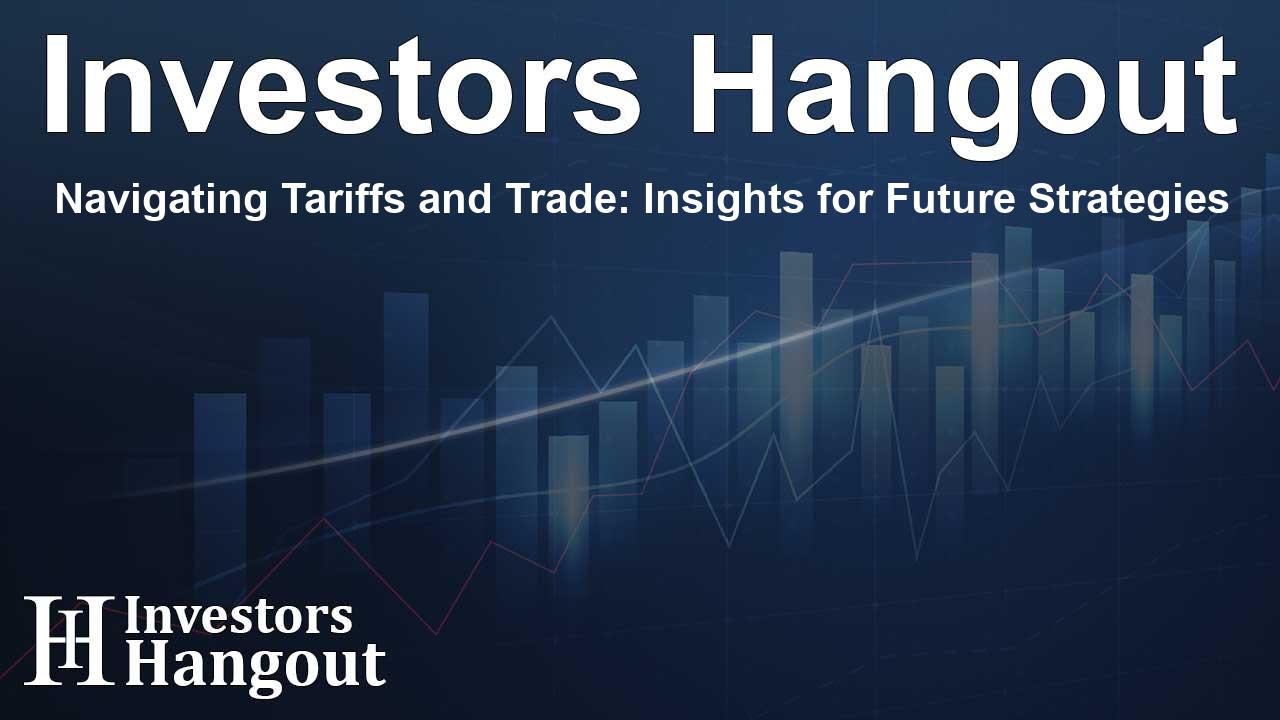Navigating Tariffs and Trade: Insights for Future Strategies

Understanding the Landscape of Tariffs
The dynamics of tariffs have become a significant part of discussions about international trade. As economic factors continually evolve, the imminent tariff strategies will dramatically affect various markets. Although the August tariff ultimatum may seem reminiscent of past strategies, the potential impacts could be different this time around.
Recent analysis suggests that the upcoming week is crucial for the economy, and expectations are that tariffs will likely increase rather than decrease. Even with ongoing trade deals being negotiated, it’s essential to understand how these agreements influence existing tariffs and market conditions.
It’s not surprising to anyone following global trade that President Trump has made moves to solidify relationships with key trading partners. The current debate centers around significant negotiations, particularly with entities like the EU and Japan. Understanding the implications of these negotiations is crucial for stakeholders.
The recent trade deals appear to formalize the existing tariff situations. They stabilize economic environments by enabling consistent revenue flow, while also attempting to mitigate retaliatory actions from trading partners. However, this begs the question: how long will these arrangements remain effective amidst ongoing challenges?
As has been observed in the past, tariffs can have sweeping impacts on various sectors, particularly pharmaceuticals, which account for a considerable portion of exports to the U.S. With this backdrop, the potential for increased tariffs raises concerns over further escalation in trade tensions.
The current environment indicates that the likelihood of tariffs rising continues to outweigh the chances of reductions. Central banks, specifically the European Central Bank, may feel the repercussions of these tariff strategies. Ongoing inflation risks may prompt the ECB to consider rate cuts moving forward to stimulate growth.
Implications for the U.S. Economy
Economic Indicators and Federal Reserve Decisions
The U.S. economy currently displays a resilient job market; however, there are signs of underlying weaknesses. Recent payroll data revisions also signal a potential shift in trends that could complicate future Federal Reserve decisions. As new job reports emerge, they could influence monetary policy adjustments.
The upcoming jobs report is expected to indicate still-growing employment numbers, yet many professionals are cautious about the underlying economy's durability. Although there might be some job additions, the overall unemployment rate is anticipated to slightly rise, reflecting ongoing uncertainties surrounding consumer spending and inflation.
Moreover, the inflation landscape remains tenuous. Higher core consumer prices hint at an uptick in costs, driven by tariff impacts. As it stands, industry experts predict that the Federal Reserve will remain cautious, likely postponing any significant rate cuts until at least the end of the year unless a major economic shift occurs.
Market Reactions and Expectations
In the financial markets, reactions are heavily influenced by projected economic indicators. If inflation persists at elevated levels, market participants remain skeptical about forthcoming rate reductions. With various economic data releases on the horizon, market sentiment could shift and lead to rapid adjustments.
For instance, upcoming GDP data may indicate stronger-than-expected growth, leading some analysts to revise their expectations. While consumers have exhibited some hesitance in recent spending trends, the broader economic foundation might still support growth in selected areas.
Global Perspectives on Economic Growth
Many economies across Europe are grappling with similar inflation concerns, and responses to tariffs are prominently featured in discussions about growth management. Policymakers continue to monitor the global trade relationships closely. The complexities of these relationships mean many countries are adopting diverse strategies to bolster their economic stability.
Key Economic Events and Outlook for Europe
In regions like Poland, for example, inflation forecasts are stabilizing, providing a conducive environment for interest rate cuts. Analysts are predicting further easing from the National Bank of Poland as inflation rates align closer to targets.
In Hungary, the economic outlook appears stable despite concerns regarding growth stagnation. Enough balance exists between sectors that can drive performance, providing a cushion against potential recession scenarios.
On a broader scale, various European economies are devising comprehensive plans to navigate trade uncertainties. Sound fiscal policies could help reinforce economic resilience as tariffs fluctuate.
Looking Ahead: Preparing for Uncertainties
As we approach pivotal economic events and indicators, businesses and investors alike must remain adaptable and informed. Engaging with flexible strategies to navigate this complex trade landscape is pivotal for sustainable growth and risk management. With potential tariff adjustments looming, the focus on comprehensive economic analysis and proactive measures becomes essential for all stakeholders.
Frequently Asked Questions
What are the potential impacts of tariff increases on businesses?
Businesses may face higher costs for imported goods, which can lead to increased prices for consumers, strained profit margins, and potential supply chain disruptions.
How do tariffs influence inflation rates?
Tariffs can elevate the costs of goods which, in turn, can contribute to overall inflation as businesses pass on these costs to consumers.
What role do central banks play in response to tariff changes?
Central banks may adjust interest rates to counter inflationary pressures or stimulate growth, often in response to economic signals influenced by tariffs.
How might trade relationships evolve due to recent tariffs?
Trade relationships could undergo significant changes, with countries seeking new partnerships or renegotiating existing deals to mitigate tariff impacts.
What should investors be aware of regarding upcoming economic indicators?
Investors should closely monitor inflation, employment reports, and GDP data as these indicators can significantly impact market conditions and investment strategies.
About The Author
Contact Caleb Price privately here. Or send an email with ATTN: Caleb Price as the subject to contact@investorshangout.com.
About Investors Hangout
Investors Hangout is a leading online stock forum for financial discussion and learning, offering a wide range of free tools and resources. It draws in traders of all levels, who exchange market knowledge, investigate trading tactics, and keep an eye on industry developments in real time. Featuring financial articles, stock message boards, quotes, charts, company profiles, and live news updates. Through cooperative learning and a wealth of informational resources, it helps users from novices creating their first portfolios to experts honing their techniques. Join Investors Hangout today: https://investorshangout.com/
The content of this article is based on factual, publicly available information and does not represent legal, financial, or investment advice. Investors Hangout does not offer financial advice, and the author is not a licensed financial advisor. Consult a qualified advisor before making any financial or investment decisions based on this article. This article should not be considered advice to purchase, sell, or hold any securities or other investments. If any of the material provided here is inaccurate, please contact us for corrections.
